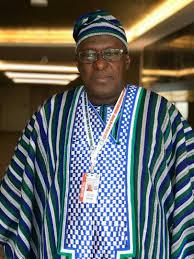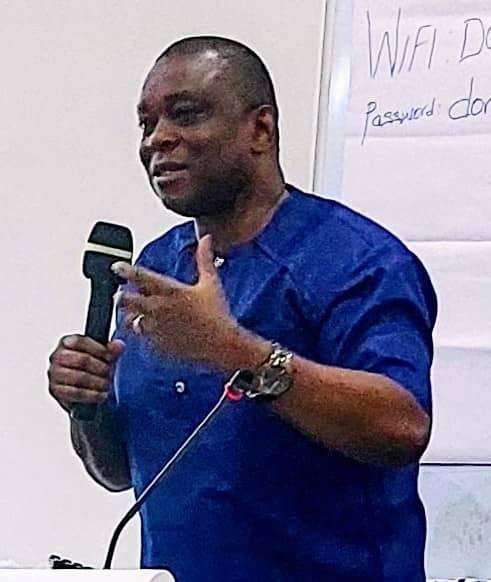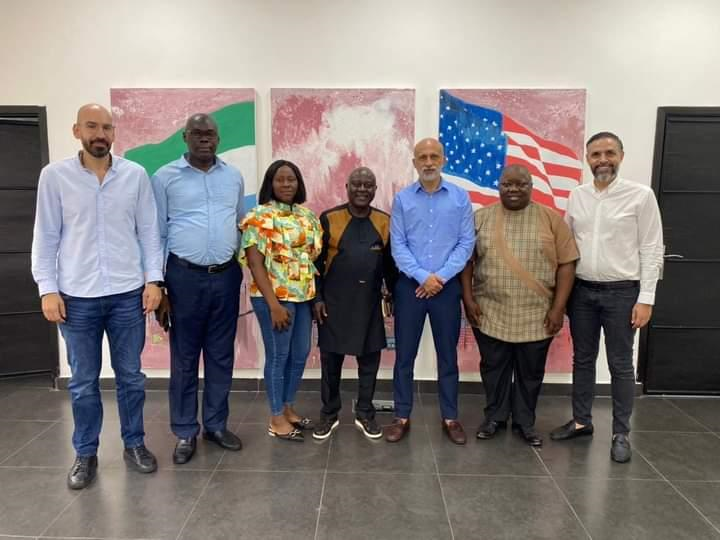West Africa: New railway network aims to boost inter-regional trade
Rail to link Benin, Burkina Faso, Côte d’Ivoire, Ghana, Niger, Nigeria and Togo
On the dual carriageway linking the main airport to downtown Niamey, the capital of Niger, workers are busy digging trenches in the middle of the island separating the lanes, and laying tracks where rows of lampposts once stood. They are racing against the clock to build a thousand-kilometre stretch of a regional network that will connect Niamey to the West African seaport of Cotonou, Benin. The project is expected to be completed by the end of 2015. (Photo: Workers lay rails at a train station outside Niamey, Niger. Photoby Ado Youssouf)
“We’ve waited so long for the train to arrive,” quipped Nigerien president Mohamadou Issoufou as he ushered his counterparts from Benin and Togo into a brand-new carriage on a muggy day in April 2014. The symbolic ride lasted for only a few minutes. “History is in the making,” said President Issoufou.
Building a railroad network along the West African coast from Abidjan in Côte d’Ivoire to Lomé in Togo has been talked about for years. The network is expected to boost trade among Benin, Burkina Faso, Côte d’Ivoire, Niger and Togo. After several delays, the project is now firmly back on track following the decision by the exclusively francophone Conseil de l’Entente (Council of Accord), the oldest West African subregional cooperation forum, to start construction. Niger and Benin started working on their stretch of the project in April, to be followed by Burkina Faso and Togo shortly thereafter.
Surface transport slow
Landlocked Niger depends on its neighbours’ seaports and road infrastructure to move its exports and imports. Much of its international trade is conducted through Cotonou and Lomé seaports.
Until recently, road transit across the region has been unreliable. The situation, however, is improving gradually as international trade corridors are being rehabilitated and many police checkpoints that were slowing down traffic and being used to solicit bribes have been removed. Yet even in those improved conditions, a private car could take up to 18 hours to travel the 1,050-km trip from Niamey to Cotonou. For freight transport, travel times are even longer; drivers could spend up to three or four days on the road.
A 2011 study of infrastructure within the Economic Community of West African States (ECOWAS) region found that road freight across the West African region moves at an average of 1.6 km per hour, almost double the average velocity in southern Africa. The study, which was done by the World Bank’s Africa Infrastructure Country Diagnostic (AICD), a project that examines physical infrastructure in Africa, also found surface transport to be more expensive than in the rest of Africa and other developing countries. It costs US$0.08 per kilometre to move one tonne of freight, twice the average cost in the rest of the developing world.
The projected regional railroad network is expected to speed up transit times for freight and reduce the prices of consumer goods for landlocked Sahelian countries such as Burkina Faso and Niger because most imported goods will be shipped by train. Those countries are also expecting the regional railroad network to boost their exports of natural resources.
Network to speed up transit time
Niger’s mineral resources contribute a very small amount to its gross domestic product (GDP), although they represent more than three-quarters of its total exports. According to Oxfam International, a UK-based charity, Niger’s uranium exports, which constituted 71% of the country’s total exports in 2010, contributed a paltry 5.8% to its GDP.
Over the next decade, however, the government hopes to quadruple the revenue from uranium. Authorities recognize that reducing production costs is key to maximising profits and tax advantages. This will entail shifting to moving uranium ore to the Cotonou seaport by rail wagons, rather than trucking it over the 2,000 km from the Northern Agadez region.
A 2013 study by Conseil de l’Entente projects mineral exports for the entire region will rise from 109,200 tonnes per year over the 2012–2020 period to 3.4 million tonnes per year over the 2020–2030 period. Since shipping goods to and receiving them from Niger and Nigeria accounts for 90% of the Cotonou seaport’s activities, Benin stands to gain from improved transportation infrastructure.
Not everybody in Niamey is convinced that building the transport network should be a priority. Representatives from civil society organizations went on the airwaves in May 2014 to voice their opposition to the project, arguing that Niger should spend its resources on guaranteeing food security and lifting its people out of poverty. The country is ranked last on the latest UN Development Programme Human Development Index. The government, however, has the support of the coalition of opposition parties.
“We are convinced that a rail network is very important for a landlocked country like ours. But rushing it over the first 140 km…is very surprising,” said Seini Oumarou, the leader of the coalition.
Niger’s general elections are scheduled to be held in early 2016. Mr. Oumarou suspects authorities of being influenced by “political expediency,” as President Issoufou has vowed to ride the train to the events commemorating Nigerien independence on 18 December.
Exploring innovative financing
The new tracks being laid from Niamey will connect to an existing sub-network in neighbouring Benin. That segment is part of a bigger West African rail track project that will loop back to Abidjan with the addition of a coastal rail line running through Cotonou (Benin), Badagry (Nigeria), Lomé (Togo) and Accra (Ghana).
Experts estimate that the Niger-Benin section will cost $1.6 billion, a sum that has long deterred investors. Governments have now started exploring innovative financing alternatives. Because of the economic potential of these projects and Africa’s expected growth over the coming years, regional authorities are eager to let private investors take control of the “strategic infrastructure” for as long as necessary to recoup their initial investments and make profits. They are inviting the private sector to invest under build, operate and transfer (BOT) arrangements. Under such an arrangement, private companies build and initially operate the infrastructure, then hand over operations and ownership to the government.
Bolloré Africa Logistics (BAL), the French company that has been awarded the Niger-Benin contract, currently operates public service concessions in Côte d’Ivoire and Burkina Faso through a subsidiary, the Société Internationale de Transport Africain par Rail.
Once the coastal rail line is completed, the whole network will be 3,000 km with 1,200 km of new track, in addition to the existing 1,800, which are to be rehabilitated. Other countries in the region are looking at similar BOT arrangements. Leaders from Benin, Côte d’Ivoire, Ghana, Nigeria, and Togo recently called on both BAL and Pan-African Minerals, a UK-based mining company, to finance the coastal rail line linking Côte d’Ivoire to Nigeria. The projected cost for this rail project is about $58.9 billion.
Since 2009, ECOWAS has been pushing for interconnection of the rail networks that exist in 11 of its 15 member states. But unlike in Southern Africa, where intra-regional rail networks are well developed and integrated, in West Africa the rail systems are mostly fragmented and operate on three different rail gauges (widths). Most francophone countries’ rails are 1,000 mm wide, but Ghanaian and Nigerian rails are 1,067 mm wide, while Guinea and Liberia use the standard 1,435 mm width. The coastal rail line project carries hope for the entire region, in part because its completion would demonstrate that once-insurmountable technical challenges can be overcome.
By: Franck Kuwonu, courtesy of Africa Renewal
Stay with Sierra Express Media, for your trusted place in news!
© 2015, https:. All rights reserved.






